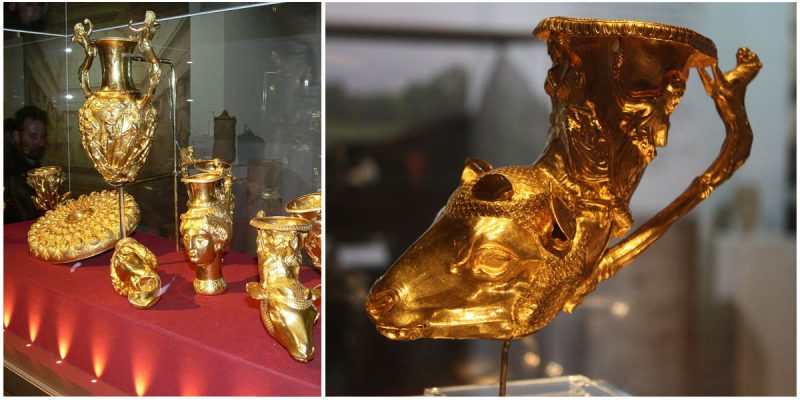The Panagyurishte Treasure is a Thracian treasure which was found on the grounds of the ceramic factory Meroul near the town Panagyurishte, Bulgaria on December 8th, 1949. The treasure was found by three brothers, Pavel, Petko and Michail Deikov when they were digging clay for bricks. It consists of a phiale, an amphora, and seven rhytons with a total weight of 6.164 kg or 24-karat gold.

At first, the brothers thought that they had merely discovered some hidden Gypsy brass instruments. Then, Dr. Petar Gorbanov, curator of the local museum, arrived at the site. He concluded that the treasure dated from the 4th-3rd centuries BC, and is thought to have been used as a royal ceremonial set by the Thracian king Seuthes III.
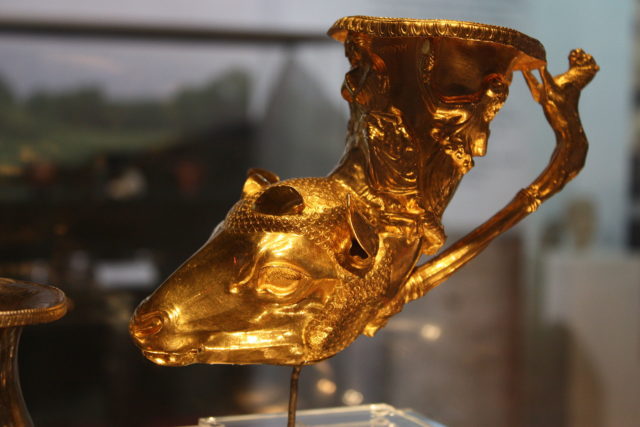
The treasure was given to the local authorities, which sent them on to Plovdiv and kept them in the vault of the Bulgarian National Bank. There are three faithful copies, which are exhibited worldwide.

The objects of the treasure are richly and skillfully decorated with scenes of Thracian myths, costumes, and life.

The Phiale is a dish or a vessel for ritual libations decorated with relief figures and a hemispherical divot in the middle. It is about 25 cm in diameter, and its bottom symbolizes the sun.
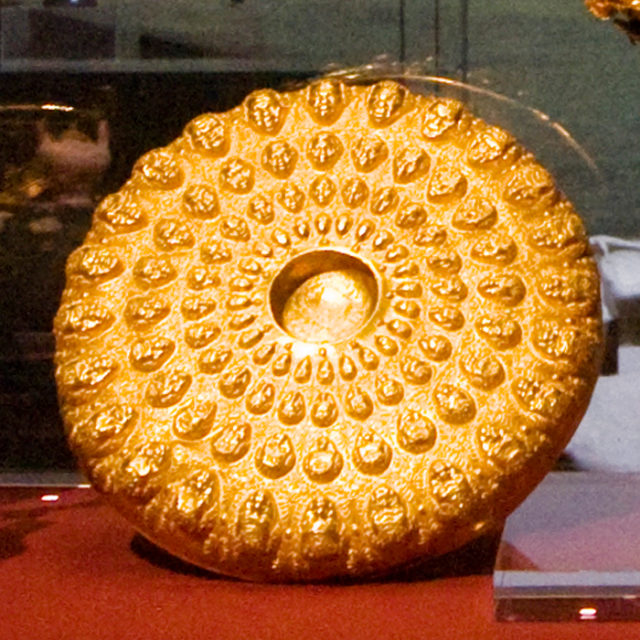
Four of the vessels are rhytons, they are shaped like female and animal heads, two of which are of fallow deer and one is like a ram’s head. They are often described as wine cups used by the Thracians but, a rhyton is,in fact, a ritual cup for sanctifying wine.
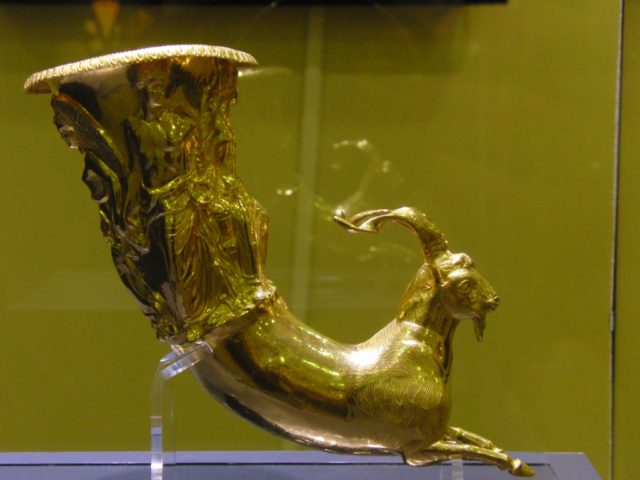
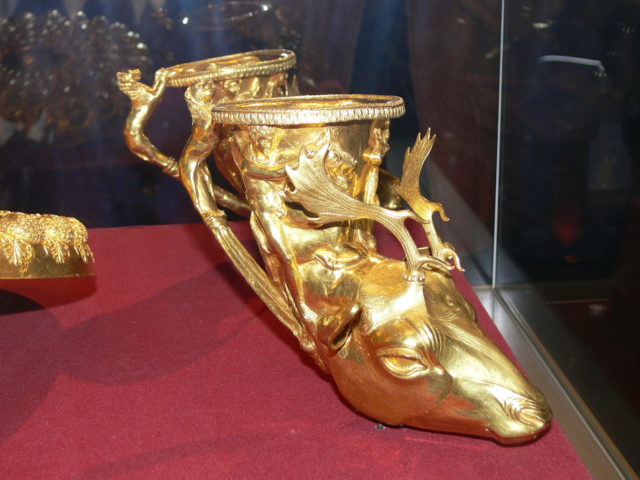
The treasure has been displayed at various museums around the world as one of the best known surviving artifacts of Thracian culture. The original treasure is the centerpiece of the Thracian art collection of the National Museum of History in Sofia.
